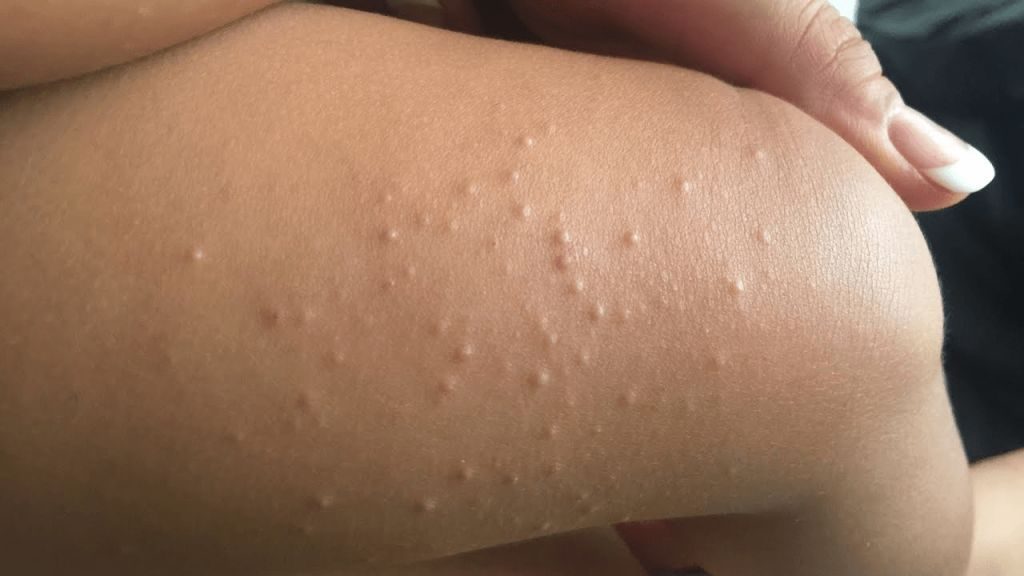Molluscum contagiosum (MC) is an infectious skin condition that creates small bumps on the upper layers of the skin. This disease is not life-threatening, but the virus spreads if the bumps or the affected skin is pricked, so it is important to be careful. In this article, we will discuss 11 home remedies for Molluscum contagiosum (MC) in children. Read on to find out what these remedies are:
11 Natural Ways to Treat Molluscum Contagiosum in Children
Neem
Neem is known as an effective treatment for molluscum contagiosum. It can neutralize and eliminate the virus. You can boil the neem leaves in water and then apply this infused water to the affected areas on the skin. You can also take a bath in this water.
Apple Cider Vinegar
Apple cider vinegar is very useful for molluscum contagiosum. It has antibacterial and antiviral qualities. One of the best ways to utilize apple cider vinegar is to dip a cotton ball into the solution and then tape it to the bumps on your skin.
Tea Tree Oil
Tea tree oil is yet another effective home remedy. This oil can be directly rubbed on the affected bumps. Use a cotton ball and dab the bumps a few times per day. This essential oil can eliminate the bumps and prevent them from returning within a week or so.
Coconut Oil
Coconut oil is another useful homemade remedy. All you need to do is to rub coconut oil directly on the affected skin areas to quickly reduce the inflammation and itchiness. It also kills the virus, thus clearing up the condition.
Oregano Oil
Mostly known as a spice, the oil of oregano boasts of a wide range of antioxidant compounds. This includes thymol, terpenes, carvacrol, and rosmarinic acid. All these compounds help to reduce inflammation of the infected areas and boost the immune system to fight off the Molluscum contagiosum virus.
Allicin
Garlic is one of the most effective herbal remedies for this condition, most importantly due to its high allicin content. Allicin is a powerful antiviral and antibacterial compound, which rapidly neutralizes most viral strains. Rubbing a poultice of garlic soaked overnight is an easy and effective home remedy for these irritating bumps.
Alcohol
Alcohol can be a simple way to cure molluscum contagiosum. Apply alcohol to the skin and cover the area. It works as a natural immune protector and can kill infections. The alcohol can soak into the bumps and neutralize the virus. The bumps will subside and disappear within a matter of days.
Duct Tape Occlusion
It may appear weird, but placing a piece of duct tape over the bumps can be a fast and simple way of clearing up the infection. By depraving the virus of oxygen and preventing its spread in the body, one can speed up the healing process and eliminate the inflammation.
Don’t Scratch
It’s important not to scratch and pick the bumps because this can cause the bumps to worsen and spread to other parts of the skin. Bleeding will make it harder for the bumps to heal and may prolong the duration of time that the virus is contagious. Try to keep your child’s skin clean. Keep their hands off of any bumps to prevent scabbing and scarring. Make them wear clothing that covers affected skin to avoid rubbing the bumps up against anyone else.
Use Creams
This remedy is not exactly a natural remedy, but you can try to use the store bought creams available to treat this condition. Just make sure to check the labels and ask your doctor if the cream is okay for your child’s skin.
Apply Anti-Viral Essential Oils
Certain essential oils have antiviral properties that can help fight the poxvirus. Neem oil can be used to help heal inflamed, swollen skin. You can also use lavender on your skin after bumps are gone to reduce discoloration. Most of these essential oils have healing properties. They are sometimes known to work more effectively than other home remedies. Therefore, in case you want to strictly stick to home remedies, you can try out any one of these oils and apply them for a considerable amount of time to see the results.
To conclude, Molluscum Contagiosum is not a dangerous disease. It is just a bacterial skin condition that can easily be treated by any of the home remedies we have discussed here. However, sometimes even these remedies don’t work. In such a scenario, always consult a doctor.
References
https://jamanetwork.com/journals/jamadermatology/fullarticle/2547245
https://www.ncbi.nlm.nih.gov/pmc/articles/PMC4336666/













